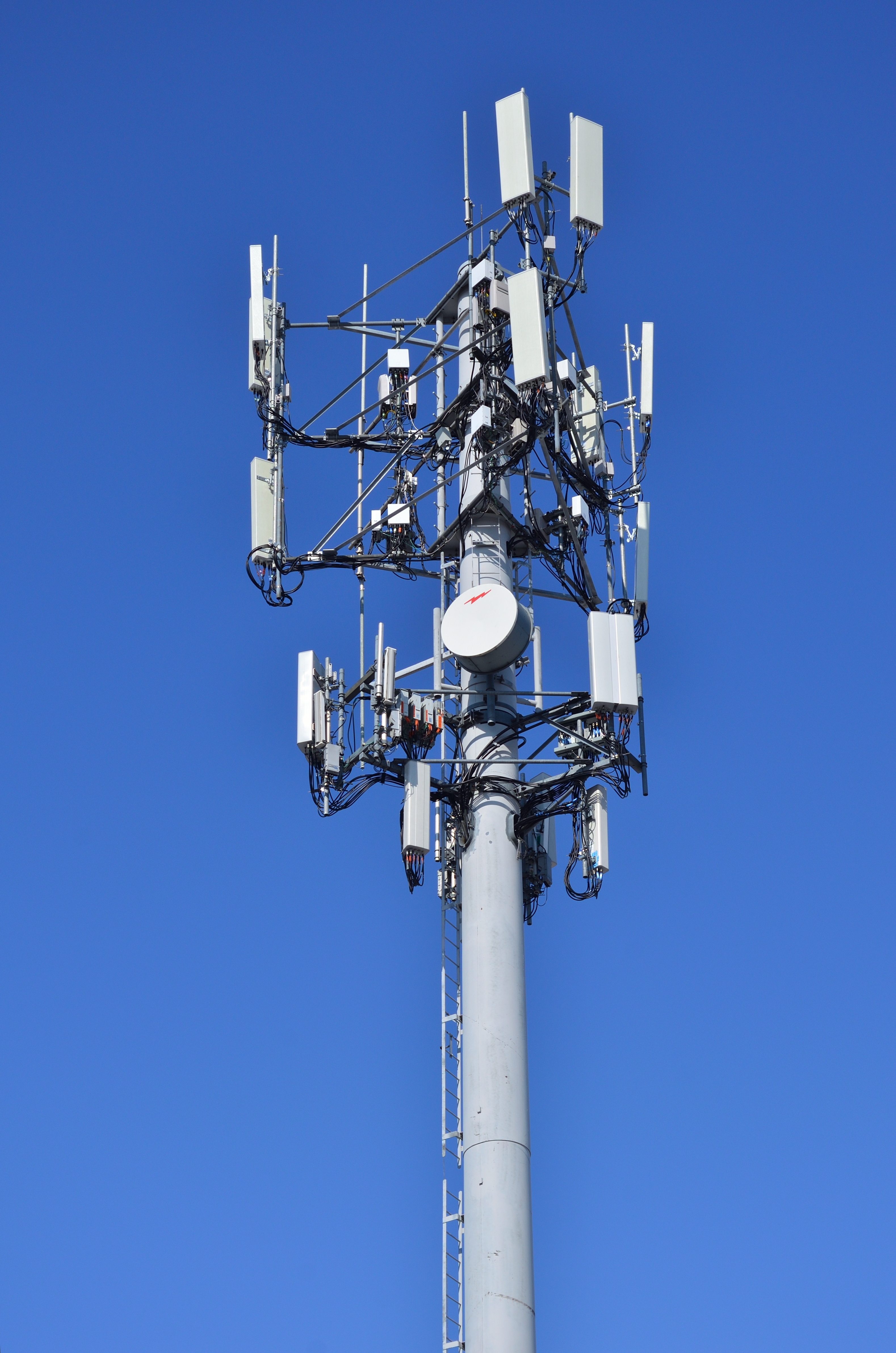
Cellular network
A cellular network or mobile network is a telecommunications network where the link to and from end nodes is wireless and the network is distributed over land areas called cells, each served by at least one fixed-location transceiver (typically three cell sites or base transceiver stations). These base stations provide the cell with the network coverage which can be used for transmission of voice, data, and other types of content. A cell typically uses a different set of frequencies from neighboring cells, to avoid interference and provide guaranteed service quality within each cell.[1]
$_$_$DEEZ_NUTS#0__call_to_action.textDEEZ_NUTS$_$_$Cell signal encoding[edit]
To distinguish signals from several different transmitters, frequency-division multiple access (FDMA, used by analog and D-AMPS systems), time-division multiple access (TDMA, used by GSM) and code-division multiple access (CDMA, first used for PCS, and the basis of 3G) were developed.[1]
With FDMA, the transmitting and receiving frequencies used by different users in each cell are different from each other. Each cellular call was assigned a pair of frequencies (one for base to mobile, the other for mobile to base) to provide full-duplex operation. The original AMPS systems had 666 channel pairs, 333 each for the CLEC "A" system and ILEC "B" system. The number of channels was expanded to 416 pairs per carrier, but ultimately the number of RF channels limits the number of calls that a cell site could handle. FDMA is a familiar technology to telephone companies, which used frequency-division multiplexing to add channels to their point-to-point wireline plants before time-division multiplexing rendered FDM obsolete.
With TDMA, the transmitting and receiving time slots used by different users in each cell are different from each other. TDMA typically uses digital signaling to store and forward bursts of voice data that are fit into time slices for transmission, and expanded at the receiving end to produce a somewhat normal-sounding voice at the receiver. TDMA must introduce latency (time delay) into the audio signal. As long as the latency time is short enough that the delayed audio is not heard as an echo, it is not problematic. TDMA is a familiar technology for telephone companies, which used time-division multiplexing to add channels to their point-to-point wireline plants before packet switching rendered FDM obsolete.
The principle of CDMA is based on spread spectrum technology developed for military use during World War II and improved during the Cold War into direct-sequence spread spectrum that was used for early CDMA cellular systems and Wi-Fi. DSSS allows multiple simultaneous phone conversations to take place on a single wideband RF channel, without needing to channelize them in time or frequency. Although more sophisticated than older multiple access schemes (and unfamiliar to legacy telephone companies because it was not developed by Bell Labs), CDMA has scaled well to become the basis for 3G cellular radio systems.
Other available methods of multiplexing such as MIMO, a more sophisticated version of antenna diversity, combined with active beamforming provides much greater spatial multiplexing ability compared to original AMPS cells, that typically only addressed one to three unique spaces. Massive MIMO deployment allows much greater channel reuse, thus increasing the number of subscribers per cell site, greater data throughput per user, or some combination thereof. Quadrature Amplitude Modulation (QAM) modems offer an increasing number of bits per symbol, allowing more users per megahertz of bandwidth (and decibels of SNR), greater data throughput per user, or some combination thereof.
Movement from cell to cell and handing over[edit]
In a primitive taxi system, when the taxi moved away from a first tower and closer to a second tower, the taxi driver manually switched from one frequency to another as needed. If communication was interrupted due to a loss of a signal, the taxi driver asked the base station operator to repeat the message on a different frequency.
In a cellular system, as the distributed mobile transceivers move from cell to cell during an ongoing continuous communication, switching from one cell frequency to a different cell frequency is done electronically without interruption and without a base station operator or manual switching. This is called the handover or handoff. Typically, a new channel is automatically selected for the mobile unit on the new base station which will serve it. The mobile unit then automatically switches from the current channel to the new channel and communication continues.
The exact details of the mobile system's move from one base station to the other vary considerably from system to system (see the example below for how a mobile phone network manages handover).
Broadcast messages and paging[edit]
Practically every cellular system has some kind of broadcast mechanism. This can be used directly for distributing information to multiple mobiles. Commonly, for example in mobile telephony systems, the most important use of broadcast information is to set up channels for one-to-one communication between the mobile transceiver and the base station. This is called paging. The three different paging procedures generally adopted are sequential, parallel and selective paging.
The details of the process of paging vary somewhat from network to network, but normally we know a limited number of cells where the phone is located (this group of cells is called a Location Area in the GSM or UMTS system, or Routing Area if a data packet session is involved; in LTE, cells are grouped into Tracking Areas). Paging takes place by sending the broadcast message to all of those cells. Paging messages can be used for information transfer. This happens in pagers, in CDMA systems for sending SMS messages, and in the UMTS system where it allows for low downlink latency in packet-based connections.
$_$_$DEEZ_NUTS#1__subtextDEEZ_NUTS$_$_$
$_$_$DEEZ_NUTS#1__answer--0DEEZ_NUTS$_$_$
$_$_$DEEZ_NUTS#1__answer--1DEEZ_NUTS$_$_$